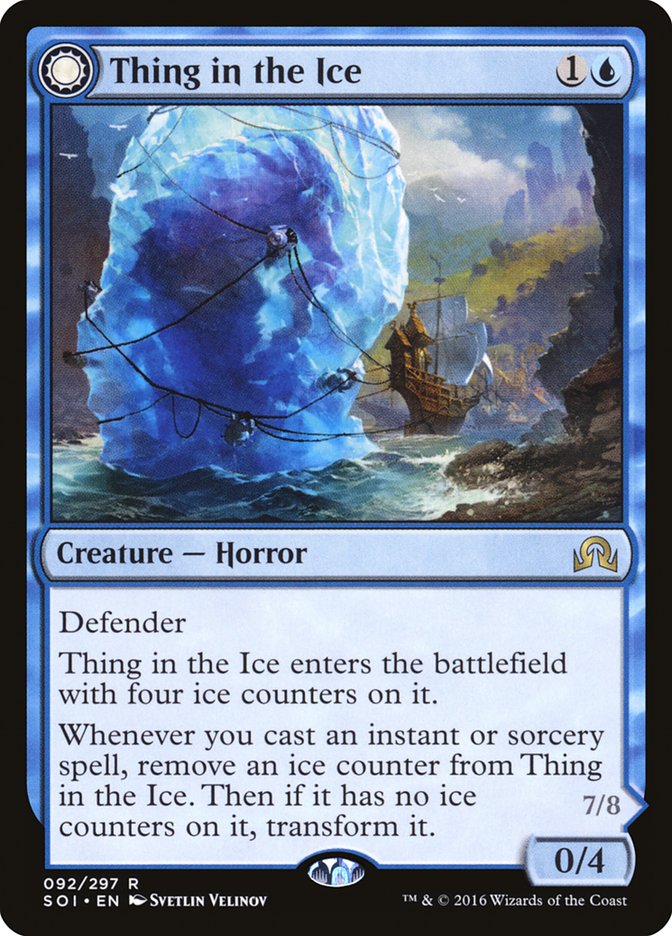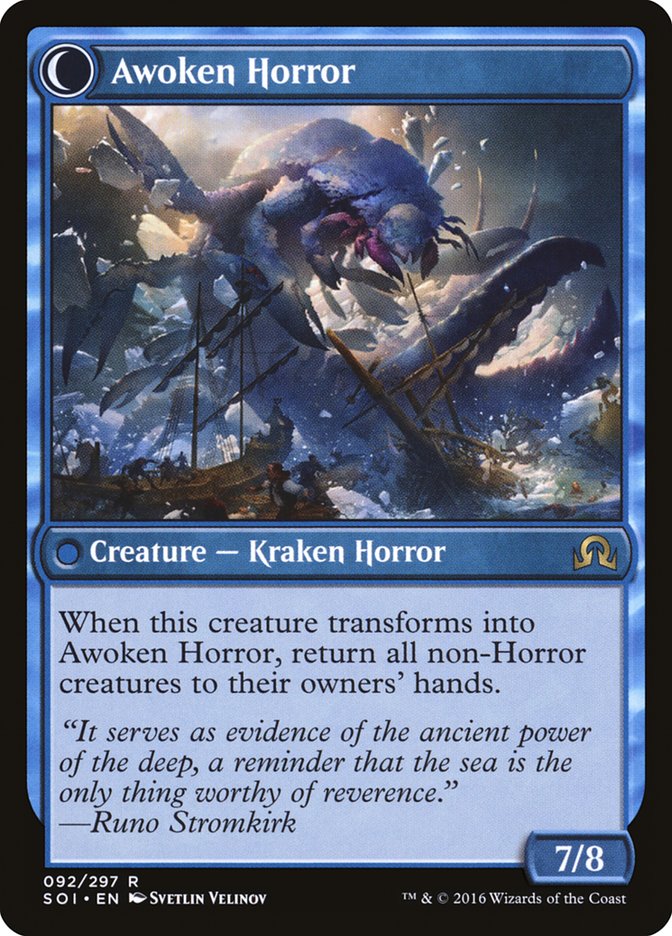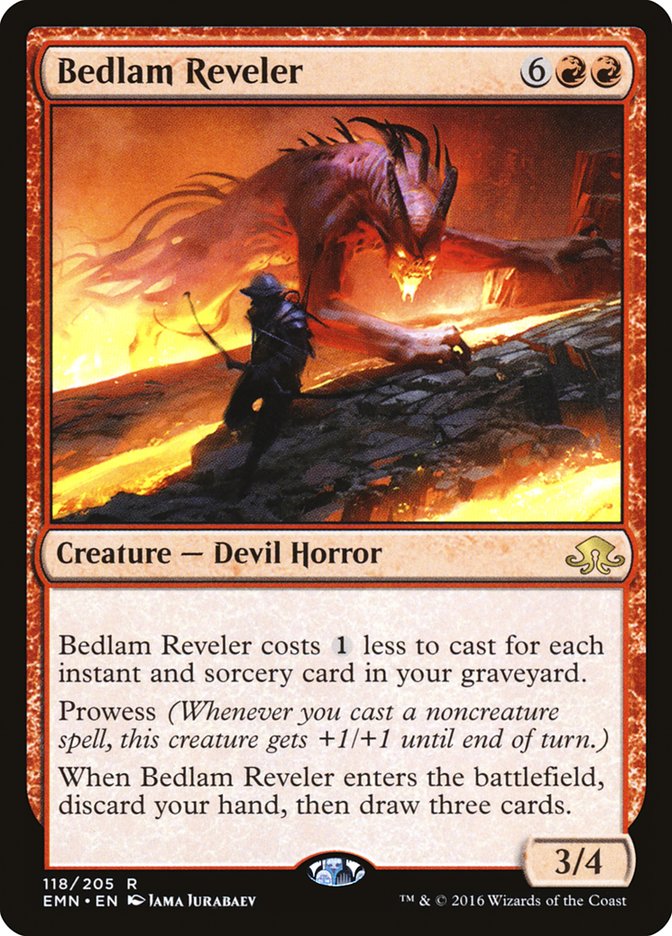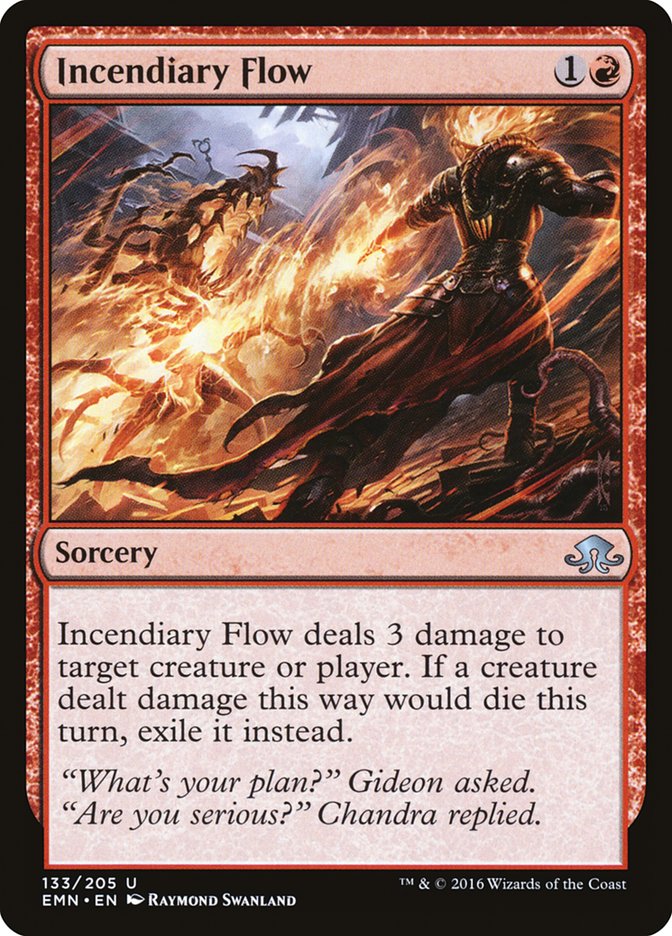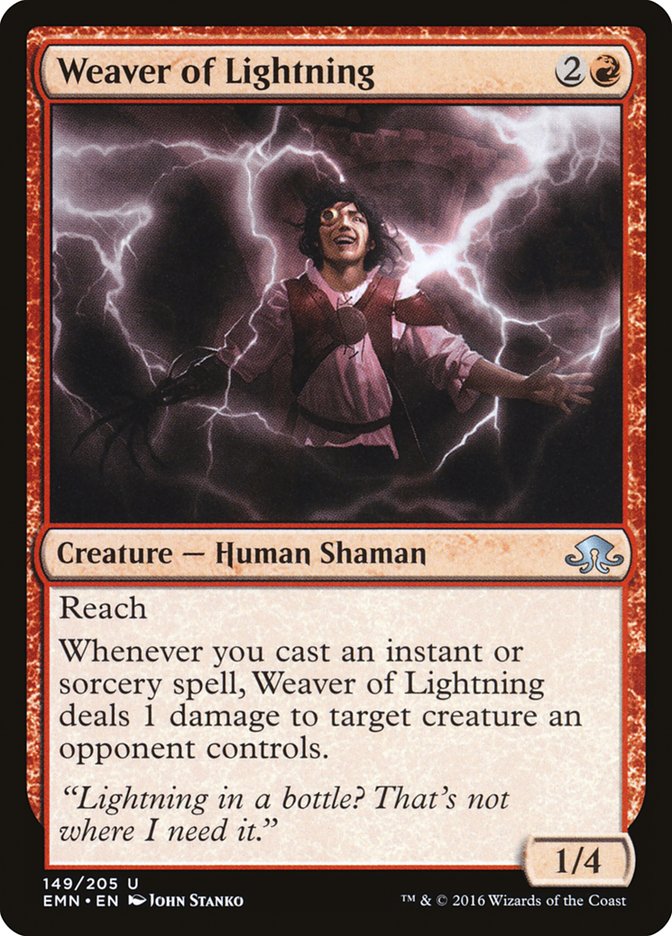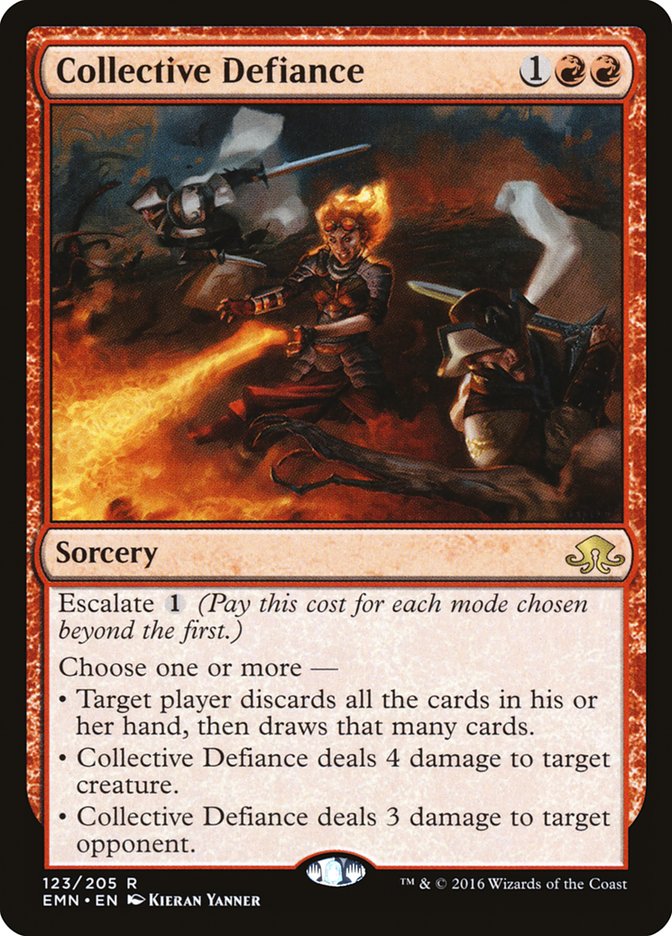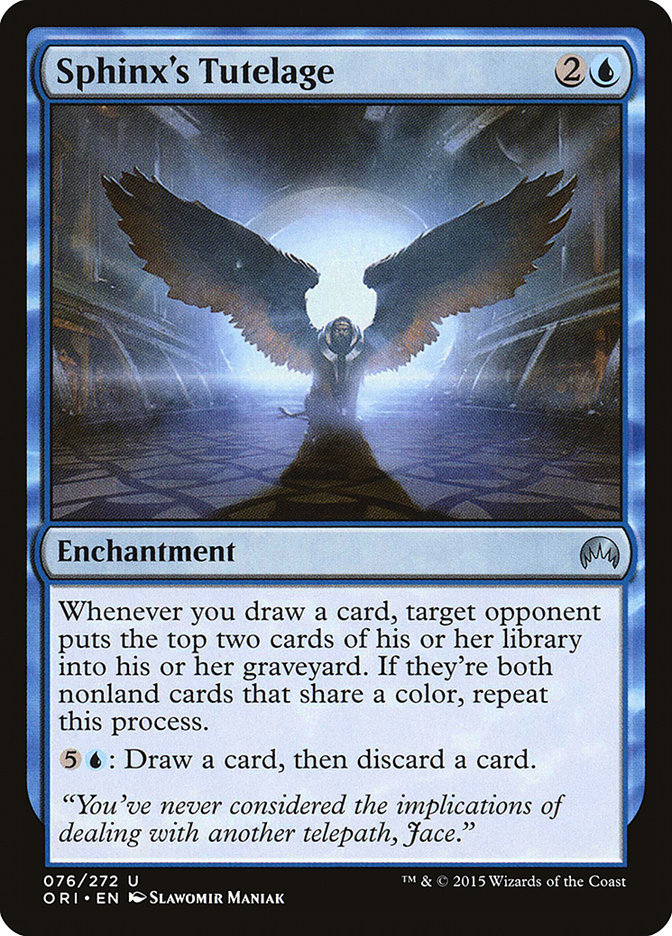In the wake of Eldritch Moon, there is a lot to consider when determining how to build new decks for the Standard format. We have a lot of data and decklists from the previous Standard, but how much can those decklists help us with the release of so many new and powerful spells? When a new Standard format comes around, the first week or two is generally full of decks we’ve seen before, but with a little twist. Building new archetypes is terrifying because taking those decks, generally untested, into hostile waters is daunting. But sometimes you just need to take a leap of faith and hope for the best.
Next weekend is #SCGCOL and we’re all eager to get our hands on the new cards at the Prerelease this weekend. Limited isn’t exactly the best method of showing just how good the new cards can be, but seeing them in their rawest form gives us an idea as to just how powerful they could be. After all, if they’re mediocre in Limited, how good can they be in constructed?
For some cards, that’s the easiest method of evaluation. For others, they need a bit of love. Cards that you need to build your deck around are possibly the most difficult to use when building new decks, mostly because it is unlikely we’ve ever seen anything like them before.
Thing in the Ice, for example, is a card that requires you to build around it. Or, at the very least, you must build your deck in such a way that you can utilize it. It is also a card that probably isn’t very good in Limited because of the level of difficulty required in transforming it.
So now that the entire spoiler is out for Eldritch Moon, we know the tools we have to work with, but we don’t know exactly how those cards interact with existing archetypes or new decks. Only playing games will give us that knowledge, so for now we must be content speculating. I’ve had my eye on a few red and blue cards to potentially help Pyromancer’s Goggles become viable again, but I’m not so certain it’s worth it. Regardless, here’s the first version of the new Pyromancer’s Goggles deck I’ve been working on.
Creatures (7)
Planeswalkers (2)
Lands (26)
Spells (25)
- 4 Fiery Temper
- 4 Lightning Axe
- 4 Tormenting Voice
- 2 Fiery Impulse
- 3 Pyromancer's Goggles
- 3 Magmatic Insight
- 1 Kozilek's Return
- 2 Fall of the Titans
- 1 Incendiary Flow
- 1 Shreds of Sanity
Sideboard

Now, before we go any further, I wanted to take a moment to discuss Bedlam Reveler and what it can do for this archetype. In general, decks like this want the threats to generate some major advantage. Whether that is card advantage, battlefield advantage, or both is entirely up to you. Thing in the Ice was a big plus for the deck when Shadows over Innistrad was first released, but it slowly lost value once people started playing more and more removal spells and Reflector Mages. It was a small investment that could generate a huge upside, but that didn’t stop it from getting mangled before you were able to flip it. And when your threats aren’t able to generate value, for whatever reason, they are not great threats for a control deck.
And at its heart, decks built around Pyromancer’s Goggles are control decks. Our goal is to use a bunch of removal spells in the early turns to make sure we can hit five mana and cast Pyromancer’s Goggles. Once we’re able to do that, everything else is mostly irrelevant. Drawing four cards a turn, or killing two creatures a turn, will bury most opponents, regardless of what they’re throwing at you. So what makes Pyromancer’s Goggles viable again?
The card that no one believes in. The card that looked so awesome once it was spoiled, but was soon discarded because it looked “too cute” or took too much time to get going.
Well, I think you’re wrong, and I’m going to tell you why.
Bedlam Reveler is most likely going to be a creature you play on turn 5 or 6, usually at the cost of three or four mana. That means you’ll have the chance to empty your hand before casting it, or potentially cast the spells you draw from its trigger. Of course, it will take some work to get going, but the entire deck is full of instants and sorceries, which are mostly removal spells. The format is chock full of creatures, so you’re going to have targets.
One major point of contention with the Lightning Axe in the Pyromancer’s Goggles deck is that it is technically card disadvantage if you aren’t using discarding something useful. And since we only have eight total cards that are useful when discarded, you can lose a card pretty easily. But the upside is that Lightning Axe kills just about every creature in Standard and is efficient on mana to boot. But your spells that combo with Pyromancer’s Goggles (and set up other nifty combos) like Magmatic Insight and Tormenting Voice require you to have a few extra cards lying around. That can be a big strain later in the game and is one of the reasons why the deck can be difficult to play. Resource management is key in a deck like this.
So why is Bedlam Reveler in the deck? Well, we need a solid body on a creature to act as a win condition, and we want it to generate a big effect once we’re able to cast it. That requires using a bunch of resources in the early turns, which we’re already planning to do. That requires putting instants and sorceries into the graveyard, which we’re already planning to do. And making the body relevant, especially prowess, is already a part of what we’re planning to do. So what’s the downside?
For starters, Bedlam Reveler is not a card you want to cast once you’ve started going off with Pyromancer’s Goggles. If you have five or six cards in hand, the last thing you want to do is discard them all just to draw three more cards. Or is it? What if one of those cards is Fiery Temper, or even just a handful of lands? The cycling your hand ability of Bedlam Reveler is extremely relevant in tight games. And if I’ve learned anything from playing Pyromancer’s Goggles, it is that you can certainly draw five or six lands once you start drawing so many cards.
Is Bedlam Reveler a major player in Standard? Who knows? I certainly don’t, but I’ll be playing some with the card this week in the VS Series against Brad Nelson. I guess we’ll find out then. And as for the rest of the new additions:
It’s been a few months since we’ve had a Volcanic Hammer variant in Standard at instant or sorcery speed. Of course, Oath of Chandra looked to fill that role, albeit poorly, since it was unable to target players. And if there’s one thing I hate, it is a burn spell that can’t target the opponent.
But Incendiary Flow, while sorcery speed, gives us a way to finish off opponents via Pyromancer’s Goggles while also giving us some cheap answer to early threats. And if those threats just so happen to be sticky annoyances (creatures that have an effect when they die), the exile effect could be useful. I’m not saying this card is busted in the Pyromancer’s Goggles deck, but I would like to give it a try. Having another cheap removal spell, and one that deals three damage for two mana, is something that this deck is more than willing to accept.
While it won’t be revolutionary, Incendiary Flow should make the cut in some number. The card is solid.
I think this card could be bonkers in the Pyromancer’s Goggles deck, but it is very tough to evaluate cards like this. For one, we need to get some stuff in the graveyard before casting it. We also would love to bring back something like Fiery Temper, just so we can discard it again. And we’d love to “fork” it from Pyromancer’s Goggles. Unlike Tormenting Voice and Magmatic Insight, we will have to discard two cards if we do “fork” it, but I’m not going to split hairs here.
I think a single copy is fine in the deck, and I would like to give it a try this week in the VS Series. If I draw it early in the game, my outlook on the card will likely be pretty negative. After all, it doesn’t seem like a card you want to draw before turn 6 or so. The real question is whether or not the effect is worth it. At the moment, I think it could be, and that’s the reason why I’m willing to give it a chance. The fact that we can actually do something positive with the discard effect from Shreds of Sanity is one major reason why I’m giving it a try.
This is the card I’m most curious about. On paper, it looks like a worse version of Gelectrode, but I think it has loads more potential. The “ping” ability is quite nice in a deck like Pyromancer’s Goggles, since it can help us combo-kill opposing creatures with cards like Fiery Impulse. But one aspect I haven’t heard anyone talk about is how good it is at blocking. Many creatures in the format have one toughness, and few have four power. That makes a 1/4 with reach something to take a look at.
On top of that, it just dominates decks with a lot of small creatures. On the blocking front or on the pinging front, Weaver of Lightning can handle a small swarm of enemies all by itself. Just imagine having two on the battlefield at once. The only downside is that it can’t hit players, which makes a bit of sense if you start considering its applications in Modern Storm decks. But in Standard, having a deck built around instants and sorceries is a perfect home for this sideboard monster.
Boss Humans is a top contender in the current Standard format, and having something like Weaver of Lightning to play in the early turns could shut them down completely. There are some difficulties thrown in, like Always Watching, but that just means you need to play another instant or sorcery to kill one of their creatures. This deck can play two or three spells in a turn without much trouble. And while you’re setting all that up, Weaver of Lightning will be blocking.
The real test for Weaver of Lightning will come in the first week of new Standard, when people tend to lean on aggressive strategies. I expect a lot of Vampire decks, and possibly even the return of Atarka Red. In both of those matchups, Weaver of Lightning will shine.
Finding the Light in the Pile of White
We’ve seen Bant Company, Tom Ross’s W/R Humans, and G/W Tokens dominate Standard in the last few months while many of us looked on helplessly. These aren’t the decks I want to play, but these are the only decks that are winning. What am I supposed to do?
I could just give in and play the “best deck” from week to week. I did that for a very long time, hopping around archetypes alongside Brad Nelson on his run to eventually winning the first ever StarCityGames.com Players’ Championship. His results were great, but mine…not so much. For some, changing decks every week or two isn’t exactly feasible. Whether it is our skill set or wallet that keeps us from doing that is irrelevant.
So we keep on keeping on, because that’s what we must do. And for those fellow Izzet mages out there, I’ve got one more piece of meat for you to chew on.
Creatures (6)
Planeswalkers (3)
Lands (26)
Spells (25)
- 4 Fiery Temper
- 4 Tormenting Voice
- 3 Sphinx's Tutelage
- 4 Fiery Impulse
- 3 Pyromancer's Goggles
- 3 Magmatic Insight
- 4 Collective Defiance
Sideboard

This version of Pyromancer’s Goggles is doing some weird stuff, and it might be a bit too much for the deck to handle. First of all, we’re trying to be a Sphinx’s Tutelage deck that uses Pyromancer’s Goggles as a removal and card draw engine. However, instead of relying completely on Pyromancer’s Goggles, we have an alternate method of winning the game in Sphinx’s Tutelage.
The trick here is understanding that Sphinx’s Tutelage works very well with two new cards from Eldritch Moon.
We’ve gone into length already about Bedlam Reveler, so let’s focus on the second one. For starters, Collective Defiance is a spell that not a lot of people are talking about but one that I think has promise. Red decks have trouble flooding on occasion, but this card is just fine at three mana. Dealing four damage to a creature is awesome, but for just one more mana you get to spin the wheel or deal three to the opponent. And for one more mana, five in total, you can do all three.
Much like Bedlam Reveler, Collective Defiance gives you the option to “spin” your hand into something a little better. Unlike Bedlam Reveler, Collective Defiance will never gain you true card advantage, but turning extra lands or dead removal spells into useful cards is almost as good as drawing extra cards. Finding ways to turn useless resources into something useful is not something we see a lot of in Standard.
In Legacy, we have Brainstorm, and the correlation is pretty simple to understand. We had extra lands, but now we’ve turned those into spells without losing a card. With Collective Defiance, we get something similar as long as we spend an extra mana or two and have some targets for the other modes. We only truly “lose a card” if we cast Collective Defiance as a bad Wheel of Fortune.
But what happens when you cast either Collective Defiance or Bedlam Reveler with a Sphinx’s Tutelage or two on the battlefield? It doesn’t take much to deck your opponent with Sphinx’s Tutelage, as anyone who has played with the card already knows. But big draw effects, like Chandra, Flamecaller and the two cards listed above, will have the potential to end the game while also providing you with great effects.
My major fear is that Sphinx’s Tutelage isn’t necessary alongside Pyromancer’s Goggles. After all, I didn’t have too much trouble just killing people with Wandering Fumarole and Fiery Temper when I was playing with the deck before. I’m not sure how the format is going to shake up, and I don’t know how much we can actually rely on Pyromancer’s Goggles with Distended Mindbender running around. We need to stick something early that threatens to win the game, and hope that the rest of our deck can keep up with the field. And when we actually do get to cast Pyromancer’s Goggles, it’s just a bonus.
In the next few weeks, you’re going to have people telling you what decks are good and what new cards are great. And most of the time they’re going to be wrong, or wrong enough. I’m not going to blow smoke up your chimney. When I figure it out, I’ll let you know. For now, these are just some of the ideas I’ve been throwing around. I’ve got Izzet on the brain, and I don’t know what else to do but brew and brew. Hopefully I can get one of these concoctions to function. Until then, ship me some of your Izzet ideas, with Pyromancer’s Goggles or without. Hopefully we can make something great together!


